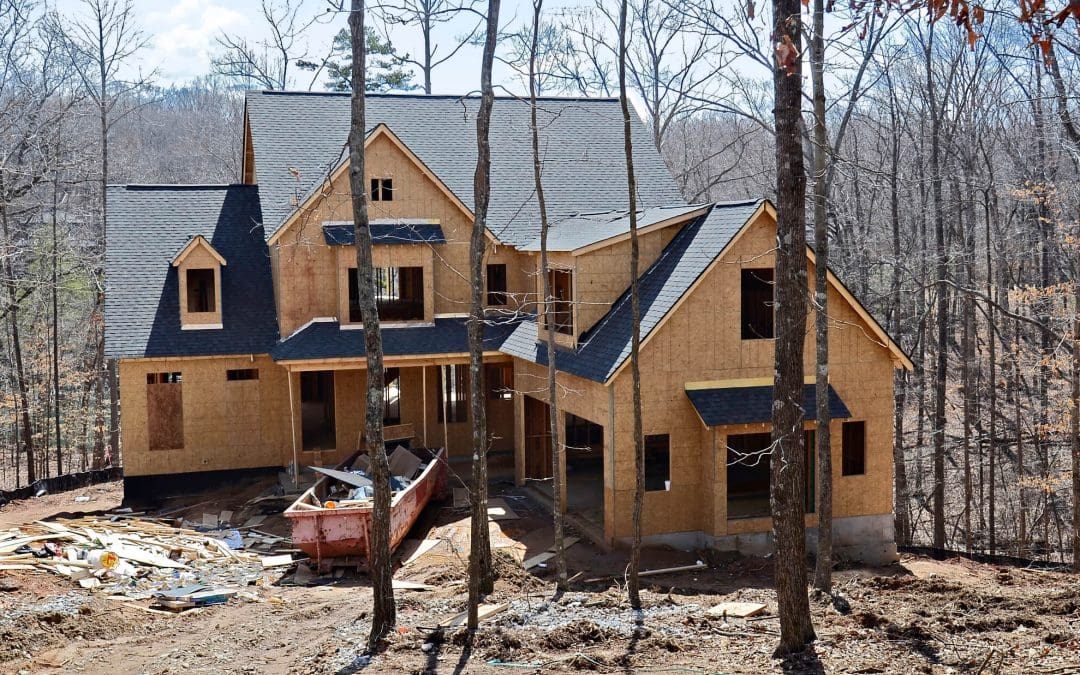With the keys in hand and the paint still fresh, it’s easy to overlook potential construction defects that could become headaches. From minor annoyances to major structural issues, new construction homes are not immune to flaws. In this guide, we’ll uncover some common new construction defects, empowering homebuyers to make informed decisions and advocate for quality construction.
Common New Construction Defects: Poor Workmanship
Despite stringent building codes and quality control measures, human error can still lead to subpar workmanship. Look for uneven surfaces, sloppy paint jobs, crooked tiles, and improperly installed fixtures. These cosmetic flaws might seem trivial initially, but they can hint at deeper construction issues.
Moisture Intrusion
Water is the nemesis of any home, and even new constructions are vulnerable. Improper sealing around windows, doors, and roofs can allow water infiltration, leading to mold growth, rotting wood, and structural damage over time. Look for damp spots, water stains, or musty odors, especially in basements and attics.
Faulty Plumbing
Leaky faucets, dripping pipes, and inadequate drainage are telltale signs of plumbing problems. In new homes, improper installation or low-quality materials can result in water leaks, reduced water pressure, or even burst pipes. Test faucets, flush toilets, and inspect visible pipes for any signs of leakage or corrosion.
HVAC Issues
Heating, ventilation, and air conditioning (HVAC) systems are crucial in maintaining indoor comfort. In new constructions, improper sizing, ductwork installation, or faulty components can lead to uneven heating/cooling, poor air quality, and increased energy bills. Ensure that HVAC systems are correctly installed and adequately sized for the home’s square footage.
Invisible New Construction Defects: Electrical Deficiencies
Faulty wiring, overloaded circuits, and inadequate electrical outlets are common pitfalls in new homes. Improper installation or shortcuts during construction can pose fire hazards and electrical failures. Test outlets, switches, and appliances for functionality, and consider hiring a licensed electrician for a thorough inspection.
Structural Issues
While less common in new constructions, structural defects can still occur due to design flaws, poor soil conditions, or inadequate materials. Cracks in walls, sagging ceilings, and uneven floors are red flags that warrant professional evaluation. Ensure the home’s foundation, framing, and load-bearing elements meet structural standards.
Costly New Construction Defects: Insufficient Insulation
Proper insulation is essential for energy efficiency and climate control. In new homes, inadequate or improperly installed insulation can result in temperature fluctuations, higher utility bills, and discomfort. Check attics, walls, and crawl spaces for sufficient insulation, and consider upgrading if necessary.
Exterior Defects
From roofing to siding, a home’s exterior is its first line of defense against the elements. Poorly installed roofing materials, cracked stucco, or improper grading can lead to water damage, pest infestations, and premature deterioration. Inspect the exterior for signs of wear and tear and address any deficiencies promptly.
While purchasing a new construction home offers modern amenities and peace of mind, homebuyers must remain vigilant and attentive to potential defects. By conducting thorough inspections, asking questions, and working with reputable builders, homeowners can mitigate risks and ensure their new abode stands the test of time. Remember, a little diligence now can save a lot of headaches later.
FAQs About New Construction
What exterior defects might be indicative of more serious underlying issues?
Cracks in the foundation, significant roof damage, or issues with the home’s exterior drainage system could all point to larger structural problems that may require professional attention.
How can I assess the quality of insulation in my newly constructed home?
Checking for drafts around windows and doors and inspecting the attic and walls for proper insulation levels can help ensure that the home is adequately insulated for energy efficiency and comfort.
What potential plumbing issues might not be immediately visible during a home inspection?
Hidden leaks behind walls or under floors and issues with sewer lines or septic systems may not be readily apparent but can cause significant problems if left untreated.
How can I protect myself from construction defects when purchasing a newly built home?
Conducting a thorough home inspection, researching the builder’s reputation and track record, and including specific warranties and provisions in the purchase contract can all help protect you from potential construction defects.
Inspect It Neil offers comprehensive home inspection services to customers in New Jersey. Contact us to request an appointment.

